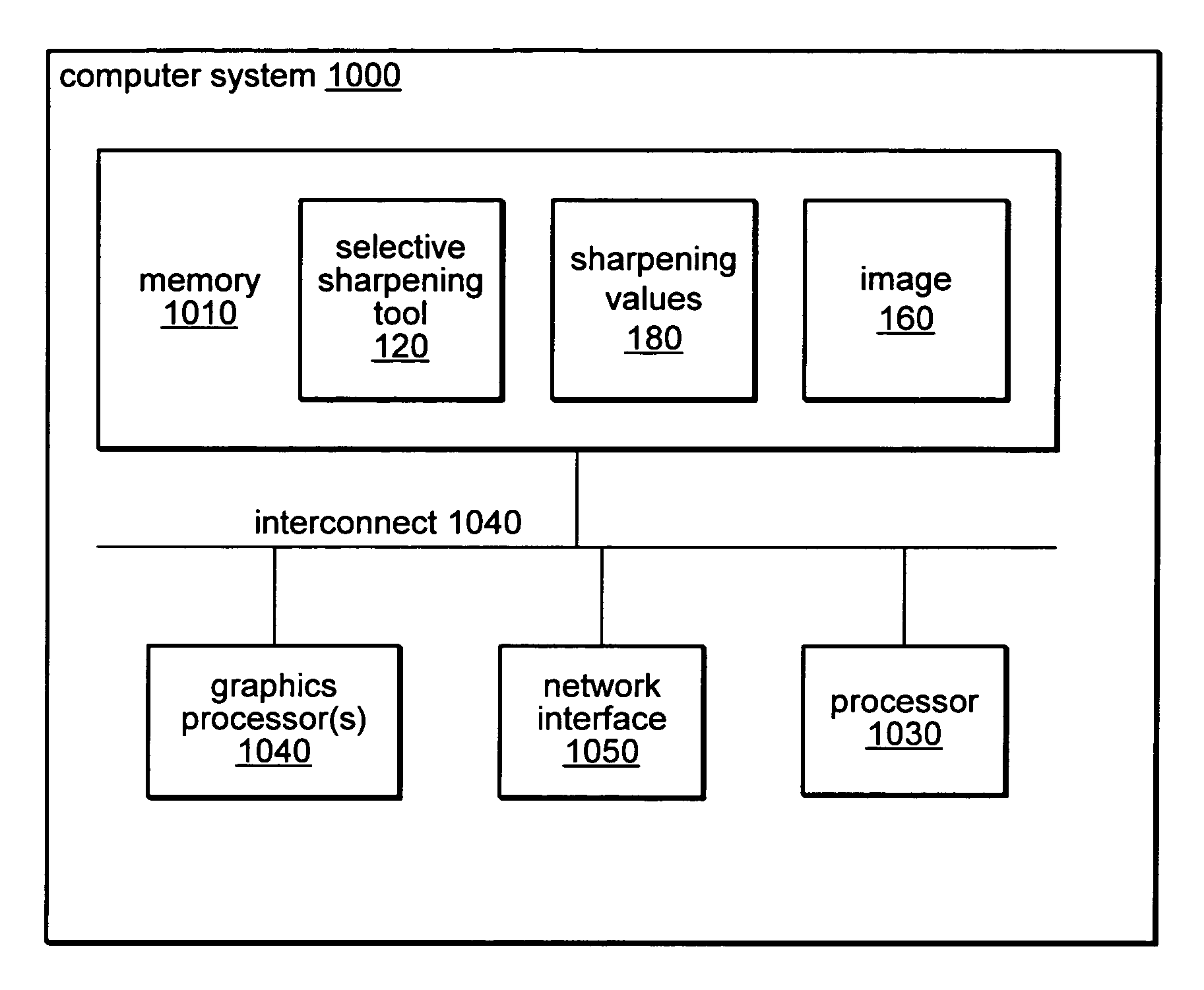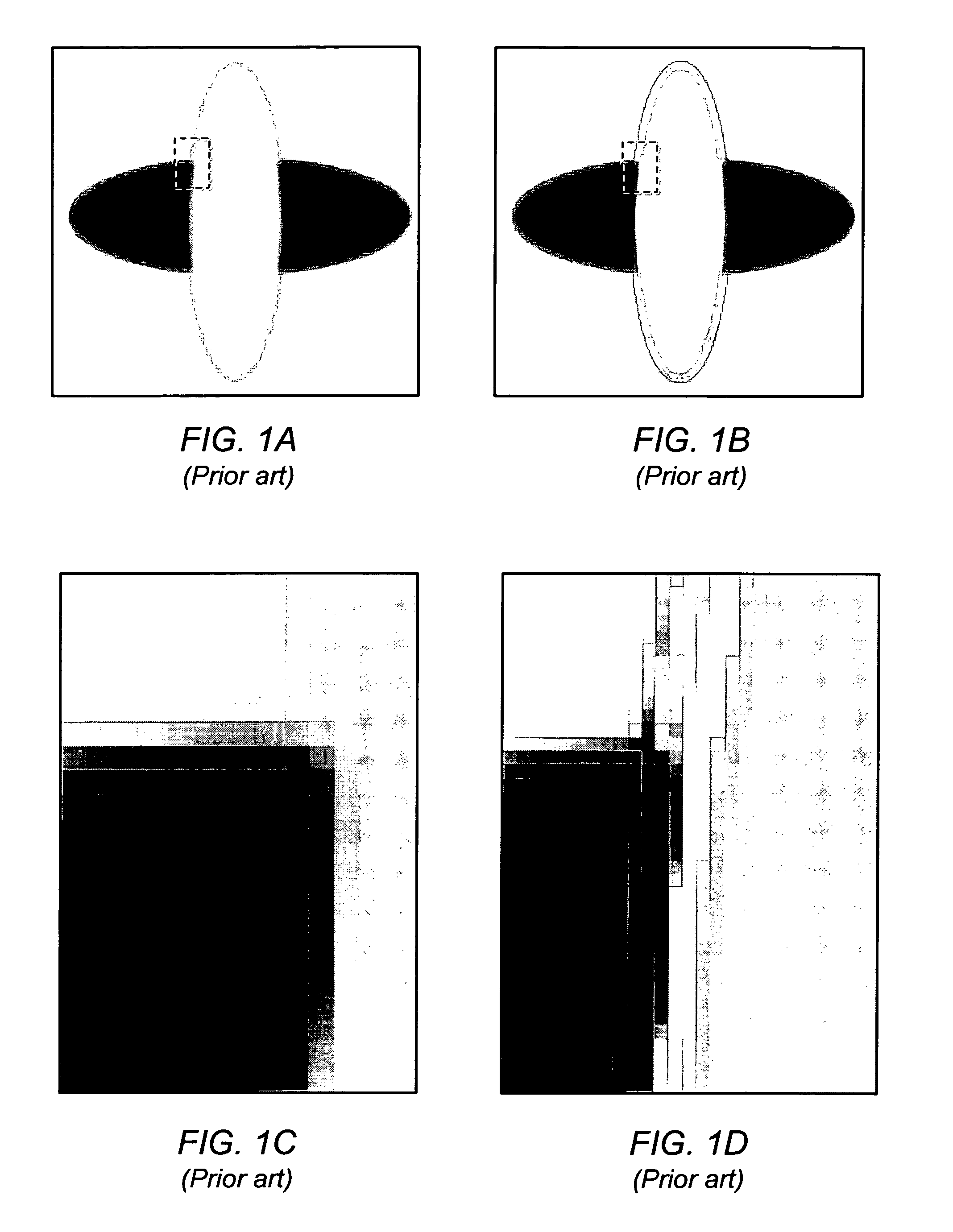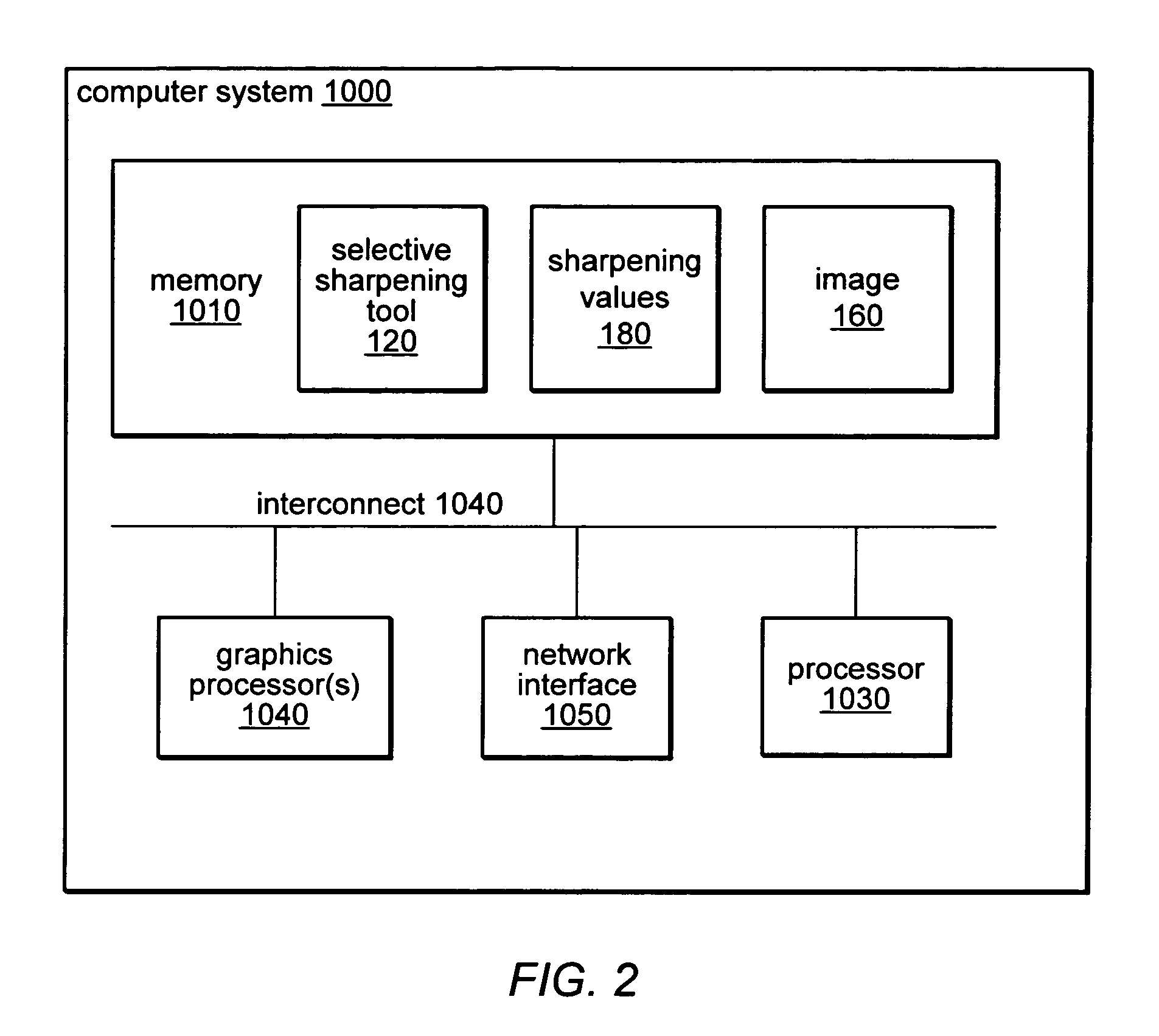System and method for selective sharpening of images
a selective and image technology, applied in the field of computer systems, can solve the problems of inability to selectively user may inadvertently oversharpen areas that are already sharp, and difficulty for the average user to manually select different regions for sharpening, etc., to achieve low sharpness and low sharpness
- Summary
- Abstract
- Description
- Claims
- Application Information
AI Technical Summary
Benefits of technology
Problems solved by technology
Method used
Image
Examples
Embodiment Construction
[0021]Selective sharpening, as described herein, may involve only applying a sharpening function to a certain percentage of the pixels of an image (or a selected region of an image) while reducing or avoiding over-sharpening already sharp areas and introducing signal noise in areas that naturally not sharp or are uniform in color and / or contrast. A selective sharpening tool may be configured to sharpen only a portion of the pixels of an image based on a user-selected region of the image and on a user-specified percentage. For example, the selective sharpening tool may be configured to allow the user to specify that only the least sharp 50% of the pixels should be sharpened. In one embodiment, the user may request sharpening on the entire image while in another embodiment the user may request sharpening on an irregularly shaped region of the image. In response the selective sharpening tool may process each pixel in the image (or a selected portion of the image) to determine where the...
PUM
 Login to View More
Login to View More Abstract
Description
Claims
Application Information
 Login to View More
Login to View More - R&D
- Intellectual Property
- Life Sciences
- Materials
- Tech Scout
- Unparalleled Data Quality
- Higher Quality Content
- 60% Fewer Hallucinations
Browse by: Latest US Patents, China's latest patents, Technical Efficacy Thesaurus, Application Domain, Technology Topic, Popular Technical Reports.
© 2025 PatSnap. All rights reserved.Legal|Privacy policy|Modern Slavery Act Transparency Statement|Sitemap|About US| Contact US: help@patsnap.com



